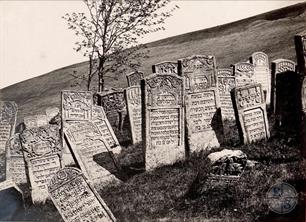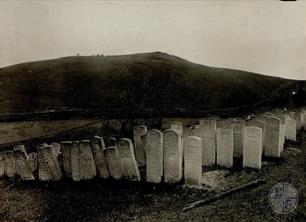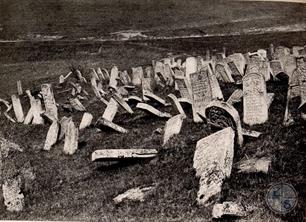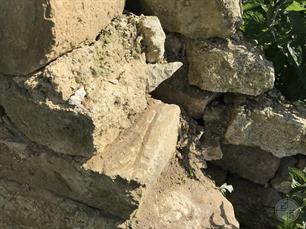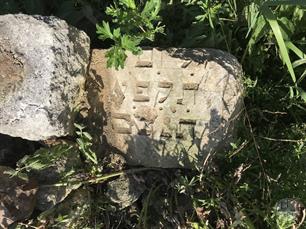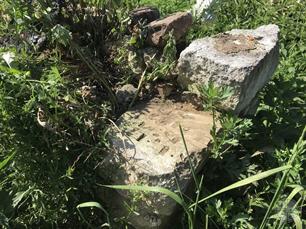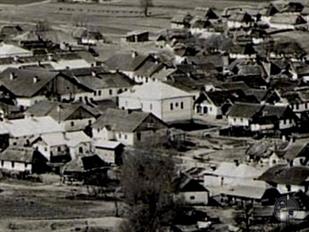Narayiv
Ternopil district, Ternopil region
Sources:
- Russian Jewish encyclopedia
- European Jewish Cemeteries Initiative. Narayiv Jewish Cemetery
- The Center for Jewish Art. Site of the Jewish cemetery in Naraiv
- Austrian National Library (by Europeana). Judischer Friedhof in Narajow
- Russian Jewish encyclopedia
- European Jewish Cemeteries Initiative. Narayiv Jewish Cemetery
- The Center for Jewish Art. Site of the Jewish cemetery in Naraiv
- Austrian National Library (by Europeana). Judischer Friedhof in Narajow
Narayiv (ukr. Нараїв), the village in Ternopil region. In the 19th - early 20th centuries - in the province of Galicia in Austria-Hungary. In 1919–39 - as part of Poland, in 1939–91 - the Ukrainian SSR.
Jews are known in Narayiv from the mid-18th century. By this time, the Jewish community became independent.
Mordechai Brandwein was the rabbi of Narayiv in the middle of 19 century.
Jacob-Yitzhak Frenkel Teumim served as a rabbi in 1850–65, then his son Iehoshua-Heshel in 1840–1894, then Fayvl Rohatyn in 1878–83.
In the late 19th – early 20th century, Berish Seym (died in 1916) was a rabbi, and his son-in-law Zvi-Yehoshua Grosvaks replaced him on this position.
In 1880, the Jewish population reached 1,088 (43,5 % of the total population),
in 1900 – 879 (32,5%).
By 1921, the Jewish population dropped to 775 (25,8% of the total).
Immigration to the U.S. influenced this figure as well.
In 1910, two synagogues and a Jewish cemetery were in operation.
Jews are known in Narayiv from the mid-18th century. By this time, the Jewish community became independent.
Mordechai Brandwein was the rabbi of Narayiv in the middle of 19 century.
Jacob-Yitzhak Frenkel Teumim served as a rabbi in 1850–65, then his son Iehoshua-Heshel in 1840–1894, then Fayvl Rohatyn in 1878–83.
In the late 19th – early 20th century, Berish Seym (died in 1916) was a rabbi, and his son-in-law Zvi-Yehoshua Grosvaks replaced him on this position.
In 1880, the Jewish population reached 1,088 (43,5 % of the total population),
in 1900 – 879 (32,5%).
By 1921, the Jewish population dropped to 775 (25,8% of the total).
Immigration to the U.S. influenced this figure as well.
In 1910, two synagogues and a Jewish cemetery were in operation.
In the 1920s and 30s, different Jewish parties and organizations were active. Mizrachi was the most widespread Zionist organization in the town. By this time, a public library operated.
Around 600 Jews resided there in 1939.
On July 1, 1941, the Wehrmacht occupied the town.
In September 1942, Jews were sent to the Belzec extermination camp. Some survived Jews returned to Narayiv after the end of WWII.
Jewish cemetery was destroyed, some fragments of the gravestones were used to build the barn next door. The only fragment with a readable date is of 1821.
Around 600 Jews resided there in 1939.
On July 1, 1941, the Wehrmacht occupied the town.
In September 1942, Jews were sent to the Belzec extermination camp. Some survived Jews returned to Narayiv after the end of WWII.
Jewish cemetery was destroyed, some fragments of the gravestones were used to build the barn next door. The only fragment with a readable date is of 1821.

- Home
- Shtetls
- Vinnytsia region
- Volyn region
- Dnipro region
- Donetsk region
- Zhytomyr region
- Zakarpattia region
- Zaporizhzhia region
- Ivano-Frankivsk region
- Kyiv region
- Kropyvnytskyi region
- Luhansk region
- Lviv region
- Mykolayiv region
- Odessa region
- Poltava region
- Rivne region
- Sumy region
- Ternopil region
- Kharkiv region
- Kherson region
- Khmelnytskyi region
- Chernihiv region
- Chernivtsi region
- Cherkasy region
- Crimea
- Synagogues
- Cemeteries
- Objects & guides
- Old photos
- History
- Contact
Jewish towns of Ukraine
My shtetl
My shtetl
Donate
Jewish towns of Ukraine
